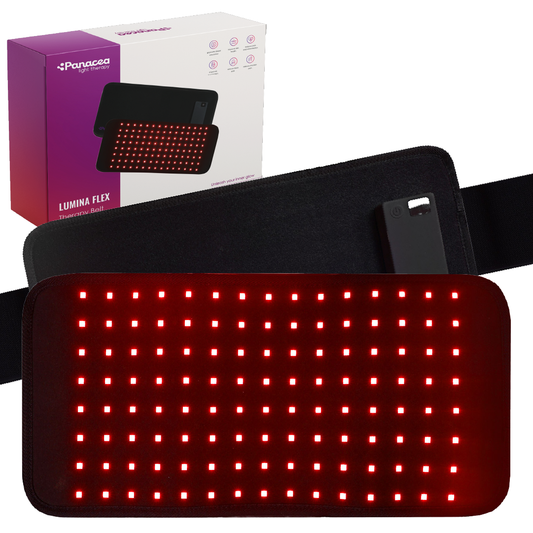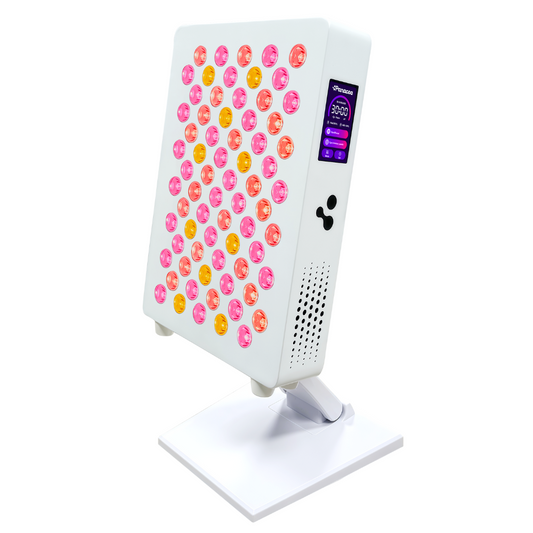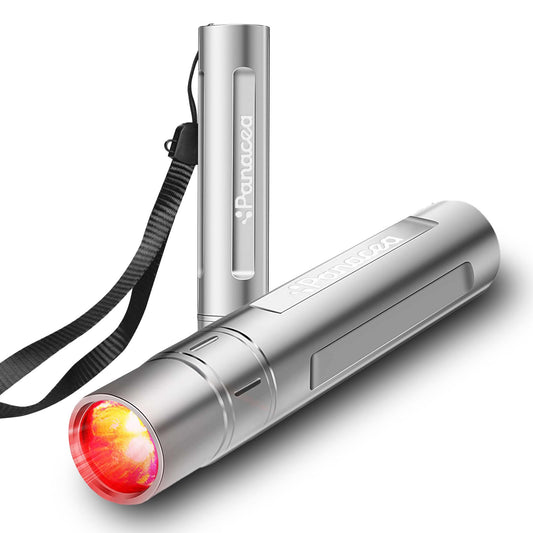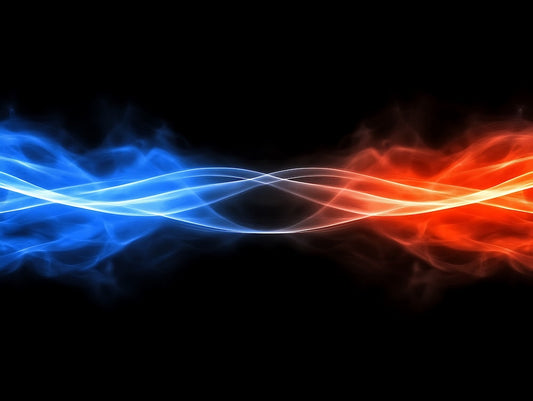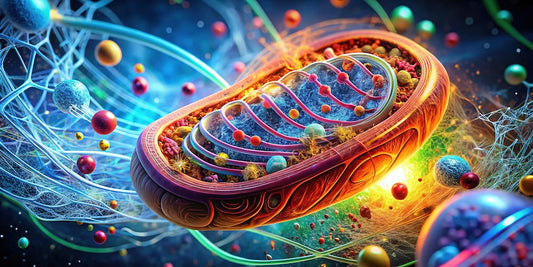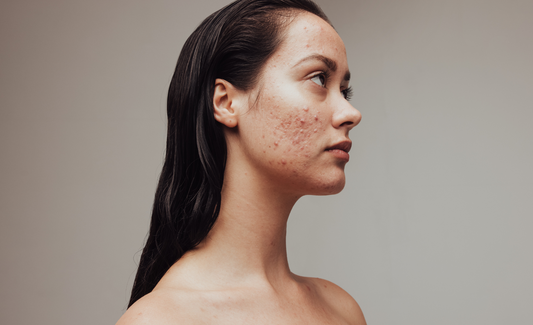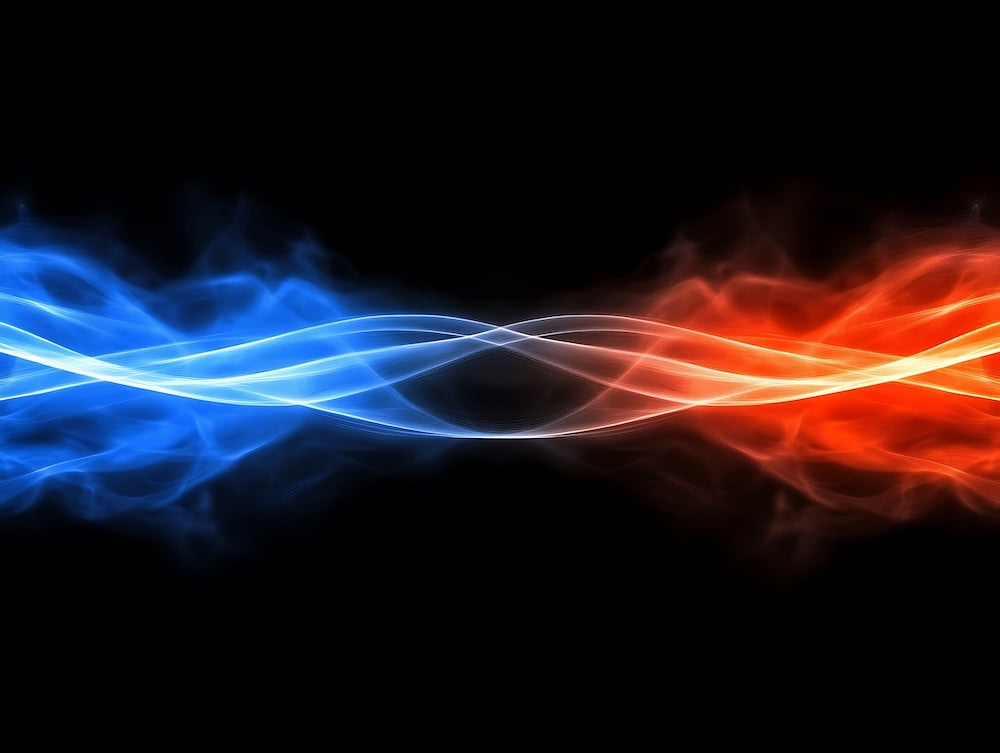
Why we don't use blue LEDs in our red light panels and you should be happy about that
Share
In the world of light therapy, it sometimes seems like "more colors" is automatically better. That's why some brands add a few blue LEDs to their red light therapy panels. Sounds advanced, but is it?
We say: no. In fact, we're making a very conscious decision not to. And in this article, we'll explain exactly why.
What does blue light actually do?
Blue light (around 415–470 nm) has two well-researched applications:
-
Suppressing melatonin
Blue light inhibits melatonin production. This is precisely why it's perceived as refreshing in the morning or during the day and helps you wake up more quickly. It's also why it can cause sleep problems in the evening if you spend too much time in front of a screen. -
Fighting acne
Blue light can kill bacteria, particularly Propionibacterium acnes , which are involved in inflammation and pimples. This effect is only achieved at high intensities , with sufficient exposure and repetition—typically with special LED masks or compact panels used close to the face.
Why a few blue LEDs in a large panel is a waste
A red light therapy panel uses infrared and red light , in wavelengths of 630–660 nm and 810–1060 nm. These stimulate ATP production in the mitochondria, promote cell repair, and reduce inflammation in muscles, skin, and joints. Every LED counts.
When you put a couple of blue LEDs in such a panel, this is what happens:
-
You sacrifice valuable space
Every blue LED means there's no therapeutic red or infrared light present at that location. And that's a waste. Especially with single-chip LEDs , which emit only one wavelength per LED, you're literally missing out on power where you need it. -
The dose of blue light is too low for effect
A handful of blue LEDs on a large body panel is nowhere near enough to wake you up or treat acne. Waking up requires intense, concentrated blue light on your retina, like you get with specialized wake-up lamps or light boxes with hundreds of lux. And for acne, you need a targeted dose of >60 J/cm², which can only be achieved with a facial mask or spot treatment at close range.
Why you should tackle your acne (or energy boost) separately
If you want to treat acne, choose a device specifically designed for that purpose. For example, a facial mask with both blue and red light, applied close to the skin, at the correct dosage and frequency.
Want to boost your energy levels or influence your biological clock with light? Use a special daylight lamp in the morning, with high lux levels that actually help you wake up more quickly; for example, 10,000 lux at a distance of 30 cm.
A few blue LEDs hidden in a full-body panel simply doesn't do either one any good.
Our philosophy: every LED counts
At Panacea Light Therapy, we believe in thoughtful design. Each LED chip in our panels is selected based on:
- Scientific effectiveness
- Synergy between wavelengths (such as 630 nm + 660 nm for skin, and 850 nm + 1060 nm for deep repair)
- Therapeutic value per square centimeter
That's why we only use red and infrared light . No gimmicks, no marketing hype. Only what really works.
Supporting research
-
Hamblin (2017) – Mechanisms of red and near-infrared light therapy on cellular function
Michael R. Hamblin describes how red and near-infrared light stimulate mitochondrial ATP production via cytochrome c oxidase, with benefits for tissue repair.
📄 Link: PubMed PMID 29164625 -
Lademann et al. (2009) – Penetration depth of visible light into human skin
Lademann and colleagues show that blue light (<1 mm penetration) barely penetrates the skin, while red/infrared light penetrates several millimeters
📄 Link: PDF article via Sciendo -
Wang et al. (2017) – Blue light-induced oxidative stress in skin
Yuya Nakashima et al. (2017) show that blue light selectively induces oxidative stress in skin cells and mitochondria, leading to aging
📄 Link: PubMed PMID 28315451 | DOI 10.1016/j.freeradbiomed.2017.03.010 -
Papageorgiou et al. (2000) – Blue-red light vs. benzoyl peroxide in acne therapy
This study compares blue (415 nm) and combined blue-red light therapy for acne. It found a 76% improvement in inflammatory lesions after 12 weeks.
📄 Link: PubMed PMID 10809858
In summary: preferably no blue in panels
Blue light has its place. But that place isn't in a red light therapy panel.
✔️ Not enough intensity for acne
✔️ Too little light dose for energy
✔️ May even increase oxidative stress
✔️Comes at the expense of red/infrared effectiveness
✔️ Works mainly at short distances, not for full-body applications
That's why we choose maximum effectiveness, with all LEDs focused on what really matters: recovery, skin improvement, pain relief and energy from within.

